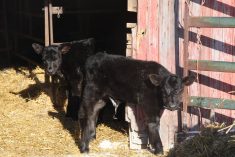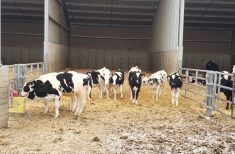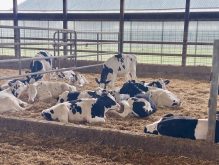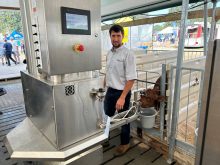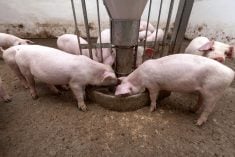Strategies to ensure calves benefit as much as possible from colostrum were offered by two speakers at the recent 2022 Healthy Calf Conference.
“We saw it when we went through that movement of feeding more milk (to calves),” said Dr. Kelly Barratt, former Heartland Vet Services partner and current director of welfare for Saputo.
Why it matters: The repercussions of poor calf nutrition, including mortality and future health setbacks, inevitably affect the bottom line.
Read Also
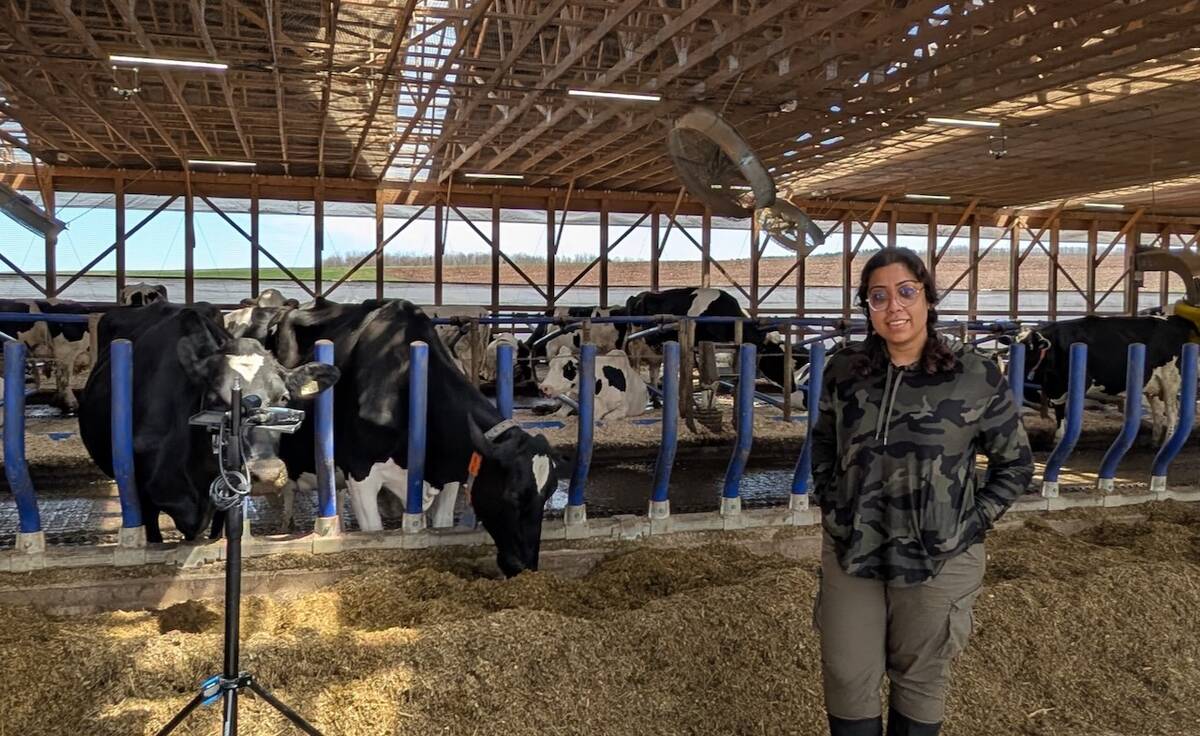
What’s in a moo?
Dalhousie University researchers use artificial intelligence to create new dairy farm apps that interpret moos and measure methane.
“All of a sudden the pens were full, the calves were healthy and big, and we were breeding heifers earlier. I think we can see the same thing happen when we fix colostrum management issues.”
Barratt and University of Guelph Animal Biosciences professor Dr. Michael Steele were among the speakers at the conference hosted by Veal Farmers of Ontario.
Barratt’s talk was entitled “There ain’t no bodies like antibodies – How to ensure you are getting the most from your colostrum management program.” Steele explored new concepts in preweaning and weaning nutrition.
Steele chronicled a series of updated recommendations for the level of immunoglobulin (IgG) in colostrum or colostrum replacer fed to dairy calves. The current recommendation is for 200 grams IgG per litre. He cited recent research providing “very clear evidence” that a saturation point for the bovine gut’s ability to absorb immunoglobulins isn’t reached even at 350 g per litre.
In his limited experience working with beef calves in Canada, Steele said they typically consume colostrum at significantly higher IgG levels that the average dairy calf.
Barratt agreed that, when using colostrum replacer, the product should provide at least 300 g IgG per litre. When using maternal milk or colostrum from other dams that has been stored in the fridge or freezer, a Brix refractometer, which is easy to use and cheap to buy, is a good start for testing quality.
A Brix reading of 22 on the colostrum roughly equates to 50 g IgG per litre.
Steele said a rising number of dairy farms use regular blood tests on calves to measure serum total protein as a way to track the passive transfer of immunity from dam to calf through colostrum.
Brix refractometers can be an effective gauge of quality for colostrum but not for colostrum replacers, he said. Relatively new work published in the Journal of Dairy Science has shown a trend toward overestimating IgG levels in colostrum replacer through serum total protein tests.
“You should actually send it to a lab and do IgG (of the colostrum replacer) if you’re interested in getting that assessment.”
He added that serum total protein tests should ideally be done at one to three days of age, when the test is most accurate for tracking colostrum quality.
Barratt said providing high-quality colostrum begins with vaccination, sufficient dry periods and good nutrition and heat abatement for heifers and dry cows.
Bacteria prevent proper absorption of immunoglobulins by the calf so it’s essential to use clean buckets, nipples and bottles, and to put the colostrum immediately into the fridge or freezer if it’s destined for future use.
Small containers or bags are better because it’s easier to achieve a uniform thaw.
Pasteurization can damage immunoglobulins, she advised, so producers should consider heat treatment instead. Don’t put cold milk in boiling water to quickly thaw it, or in warm water to gradually warm it. That can promote bacterial growth or damage the immunoglobulins.
Heat treatment is a defined process of heating the milk to 60 C for a specific time. Commercial units are available for this purpose, said Barratt, who has also seen a few creative homemade units on farms.
Enrichment of low-quality colostrum by mixing in higher quality colostrum is common in other parts of the world and in Western Canada, said Steele. His advice is to use this practice on low-quality colostrum to raise the IgG levels in a calf’s first meal, but don’t try to improve high quality colostrum by trying to enrich it further.




